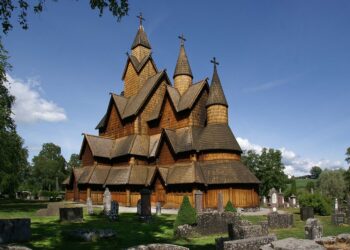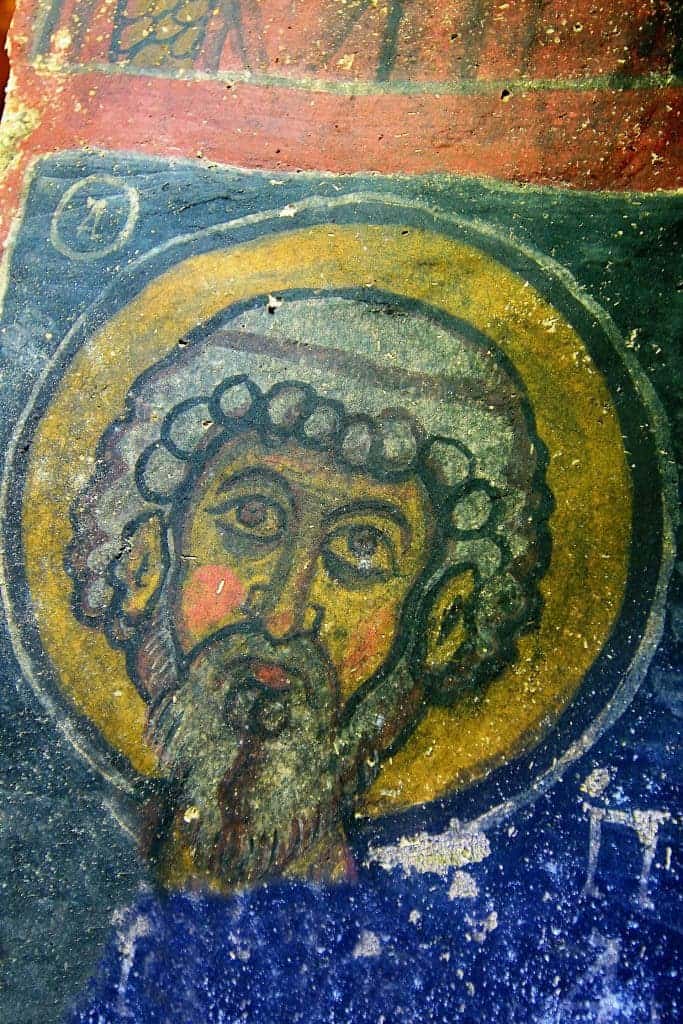Norway’s stave churches are a sight to behold. Built on staves (large wooden posts) and with a distinctive roof, they’re now almost unique in the world. But these churches are more than a tourist attraction: they tell a tale of a time when the country switched from Norse beliefs to Christianity.
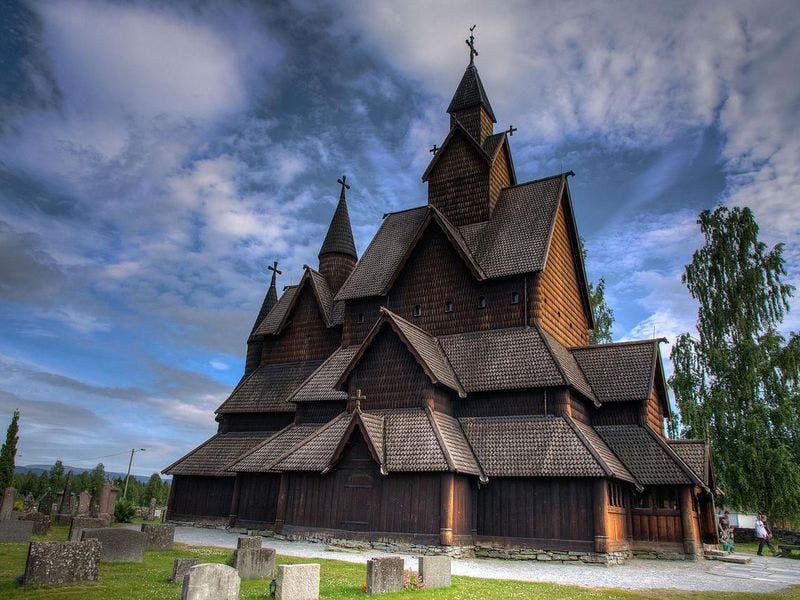
It seems somewhat surprising, given their traditional way of life, that Vikings embraced Christianity so thoroughly. But around a thousand years ago, the shift was already taking hold.
The oldest stave churches still standing today (that we know of, at least) are dated to the 1100s, but earlier churches are also known. Catholics preferred stone for their churches, and Vikings also built some wooden churches — but stave churches were the norm. They didn’t use any nails, just wood, and the inside was often decorated with dragons or other mythical animals.
It’s a weird thing to decorate your church with. Most churches have biblical events or scenes carved or painted, but mythical animals are not a common sight. Typically, these animals have been interpreted as pagan remnants, a sign that even though locals switched to Christianity, they maintained some of their previous beliefs.

When Norway obtained independence in the 19th century, following the “four hundred year night” rule under Denmark, Norwegians sought to rediscover their national cultural heritage — and found it in stave churches. They were unique, historians at the time said, and the animals carved inside them are also unique.
But they may have only been half right, says post-doctoral fellow Margrete Syrstad Andås at Norwegian University of Science and Technology (NTNU), who is spearheading a research project on stave churches.
“Stave churches were once the main focus of Norwegian historical art research because nationalism was important,” says Andås.
“But times have changed. Nationalism as a theme has become more problematic, and at the same time we’ve started questioning how Norwegian these buildings really are. Part of my project involves shedding new light on the stave churches.”
Which begs the question: just how uniquely Norwegian are stave churches, and are the decorations truly pagan?
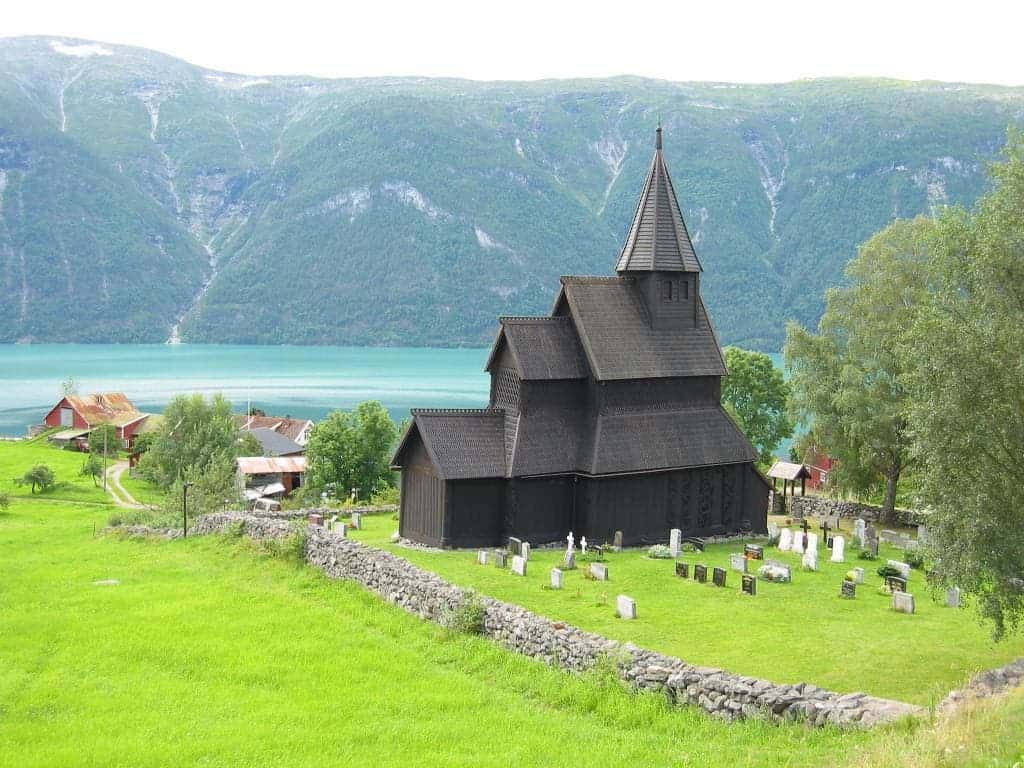
Most research on stave churches was only published in Norwegian or other Scandinavian languages — rarely in German — which made it inaccessible to other researchers, and essentially perpetuated early findings about the churches. Andås wants to help contradict some of the false ideas about churches and make real science more available to the world. Some of her work focused on the Urnes stave church, depicted above.
“With The Urnes Project I want to show that the stave churches reflect a common European cultural heritage. The aim of the project is to ensure that stave churches are brought into the European conversation about the medieval art in architecture,” she says.
The first part of the study involves dating the church and its elements. Researchers know that Urnes was built in the 1130s, but wooden churches (and many large timber buildings) often incorporated wood from earlier structures. This wood can be dated using a method called dendrochronology, based on the trees’ growth rings.
When there’s a dry year, or a particular rainy one, this information is conserved in tree rings. Over the years, researchers have built catalogs of what these years “look like” in the tree rings, and whenever they find timber with visible rings, they can backtrack it and see when the tree was cut.
Surveys show that the chieftain of Urnes started cutting trees for the church in the winter of 1131-1132. However, the church reused a portal from the previous church, dated to 1070. The oldest dated logs in Urnes went as far back as 765 — the oldest Norwegian church material found with this method.
But the portal is particularly intriguing.
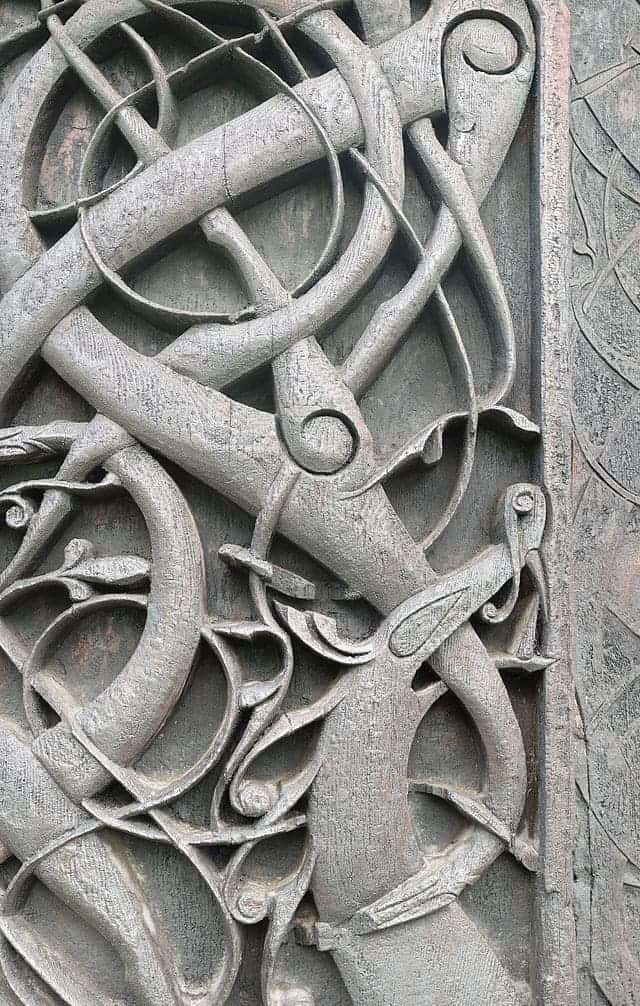
“Several of the serpents entwining and attacking the big lion on the portal are transformed into lilies,” says Andås.
This was regarded as a classic Norse motif, but Andås believes that this interpretation isn’t really correct. Another researcher in the project, Natalie le Luel, points to the importance of one overlooked detail: the animals are in a hybrid state, becoming transformed from serpents into lilies. In this, le Luel sees a different motif: the lily was a symbol of salvation at the time, and thus the evil powers – the forces of chaos – appear to be in the process of themselves being overcome by good. The dragon, another symbol represented at Urnes, is not necessarily as Norse as once thought, the researchers also point out.
“The dragon is often portrayed in modern times as representing the pre-Christian Nordic era, but this is completely wrong,” notes Andås.

Urnes stave church bears similarities to churches in other parts. With its ancient Viking-age art and animal ornamentation, it still bears resemblance to what was going on in other places.
Urnes researcher Griffin Murray has studied the Urnes style outside Scandinavia, especially Irish churches. The Urnes style represented a form of expression that stretched from the Baltic Sea in the east of Scandinavia to Ireland.
The dragon itself is completely missing in pre-Christian times in Scandinavian art (where wingless serpents predominate). In this context, the dragon was interpreted by the research team to represent evil in a Christian context. Other animals are also believed to represent Christian motifs and serve as an allegory, though in a rather unconventional way.
“The animal is a stylized lion, a central motif in the heraldry of the late Viking age. The lion as a symbol of the ruler can also symbolize Christ, who is struggling against the evil forces,” says Syrstad Andås.
All in all, the new interpretation points to the Urnes church art as a magnificent collection of Christian, rather than pagan craftsmanship — with the main theme of the struggle between good and evil. Sure, it was a rather unusual type of Christian art, but Christian nonetheless.
“Inside the church, continentally oriented and highly educated craftsmen carved a series of nearly fifty decorated capitals, with lions in acrobatic poses, dragons, hunting scenes, men pulling their beards and men fighting with lions,” says Syrstad Andås.
Since Norwegian stave churches were not regarded with much interest in science until now, it’s quite possible that we’ll be learning much more about these churches in the years to come. Almost a thousand years after they were built, these churches are getting new life.
